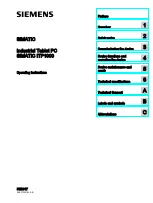
31
Hysteresis
To compensate for fluctuation of the measured data, which may
cause the weather alarm to sound constantly if the measured reading
is close to user set level, a hysteresis function has been implemented
for each weather alarm. For example, if the high temperature alarm is
set to +77°F and the current value moves to +78°F, the alarm will be
activated (if it has been enabled). Now when the temperature drops to
+76°F or below and thereafter again increases to 77°F, the
data will be blinking, but no alarm will be activated. It has to drop to
below +75.2°F (with a pre-set hysteresis of 1.8°F) so that the alarm
can be produced again. Hysteresis values for the various weather
data types are given in the following table:
Weather data
Hysteresis
Temperature 1.8°F
Humidity 3%
RH
Air pressure
0.0295 inHg
Rainfall 24h
0.1968 inch
Rainfall 1h
0.01968 inch
Wind
3.1 mph
16.
Auto memory for stored values
The base station has a memory back up system, which is used to
memorize user-defined settings for when the batteries are changed or
if a power failure occurs. User defined units are automatically updated
each time these are changed. The base station will memorize the
following user defined units:
•
Time
zone
•
12/24h time display mode
•
Unit settings (temperature, pressure, rainfall, wind)
•
Air pressure offset for calculation of relative air pressure
•
Weather picture threshold
•
Storm warning threshold
•
LCD
contrast
•
Alarm
time
•
Weather Alarm thresholds
•
State of alarms (enabled/disabled)
•
Rainfall total value and reset time/date










































